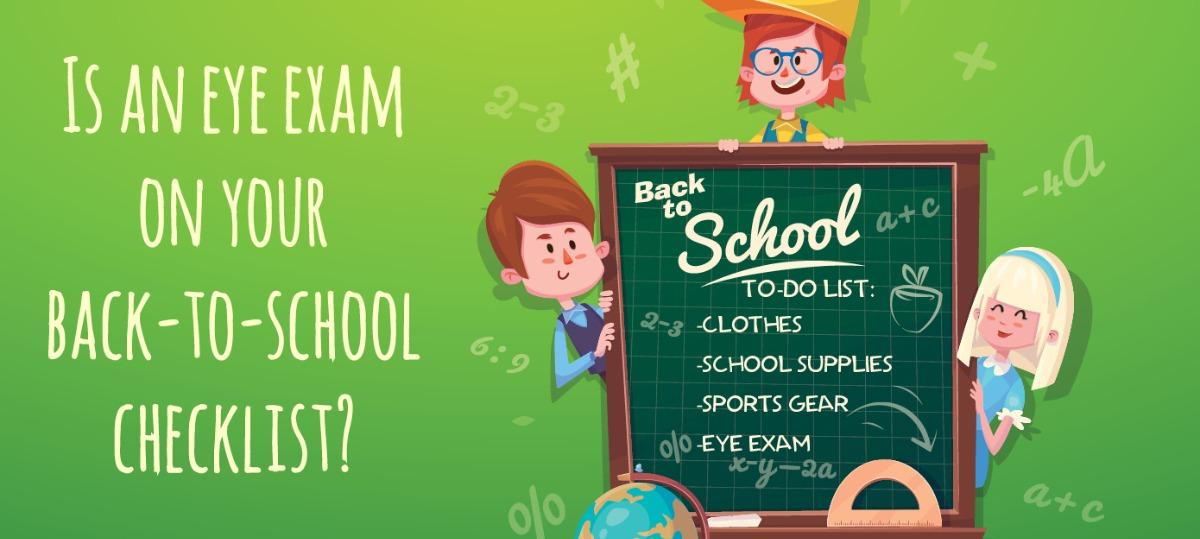
As children progress throughout their education, they face increasing demands on their visual abilities. The size of print in textbooks becomes smaller and the amount of time spent reading and studying increases significantly. Increased workload and homework place significant demands on the child's eyes, and children depend on their vision to function properly so they can learn efficiently and excel.
That’s why it’s important to get ahead of your back-to-school to-do lists and book an appointment with a doctor of optometry for your whole family.
Healthy vision is correlated to success in the classroom and beyond
Vision issues aren’t isolated problems but instead affect almost every aspect of a child’s development, ranging from academics and athletics to social interactions and self-esteem. But without a comprehensive eye exam from an optometrist, many vision disorders may go undetected or, worse yet, may be misdiagnosed as ADHD, dyslexia, a learning disability, or a behavioral problem. These labels can then be carried into adulthood, further affecting an individual’s level of education, employment opportunities, and social interactions—without ever addressing the real underlying issue.
Vision skills needed for school
Vision is more than just the ability to see clearly or having 20/20 eyesight. It is also the ability to understand and respond to what is seen. There are many basic visual skills beyond seeing clearly that are important to supporting academic success.
Every child needs to have the following vision skills for effective reading and learning:
Visual acuity—the ability to see clearly in the distance for viewing the chalkboard, at an intermediate distance for the computer and up close for reading a book.
Eye focusing—the ability to quickly and accurately maintain clear vision as the distance from objects change, such as when looking from the chalkboard to a paper on the desk and back. Eye focusing allows the child to easily maintain clear vision over time such as when reading a book or writing a report.
Eye tracking—the ability to keep the eyes on target when looking from one object to another, moving the eyes along a printed page or following a moving object like a thrown ball.
Eye teaming—the ability to coordinate and use both eyes together when moving the eyes along a printed page, and to be able to judge distances and see depth for classwork and sports.
Eye-hand coordination—the ability to use visual information to monitor and direct the hands when drawing a picture or trying to hit a ball.
Visual perception—the ability to organize images on a printed page into letters, words and ideas and to understand and remember what is read.
Other visual perceptual skills include:
Recognition—the ability to tell the difference between letters such as "b" and "d".
Comprehension—"picture" in the child's mind of what is happening in a story he/she is reading.
Retention—remember and recall details of what was read.
If any of these visual skills are lacking or not functioning properly, a child will have to work harder to learn as effectively. A child may not tell you that they have a vision problem because they may think the way they see is the way everyone sees. Children will typically attempt to do the work but with a lowered level of comprehension or efficiency. Students who struggle with a learning-related vision problem may experience headaches, eyestrain and fatigue. Parents and teachers need to be alert for symptoms that may indicate a child has a vision problem.
Signs of eye and vision problems
Complaints of discomfort and fatigue.
Frequent eye rubbing or blinking.
Short attention span.
Avoiding reading and other close activities.
Frequent headaches.
Covering one eye.
Tilting the head to one side.
Holding reading materials close to the face.
An eye turning in or out.
Seeing double.
Losing place when reading.
Difficulty remembering what they read.
Why back-to-school eye exams are crucial
Because vision may change frequently during the school years, children should receive an eye examination every year, or more frequently if specific problems or risk factors exist, or if recommended by an optometrist. Unfortunately, parents and educators often incorrectly assume that if a child passes a school screening, there is no vision problem. The most common vision problem in school-age children is blurry vision or refractive error caused by nearsightedness (myopia), farsightedness (hyperopia) and astigmatism resulting in blurry vision. However, a child who can see clearly and has 20/20 vision can still have a vision problem relating to eye focusing, eye tracking and eye coordination. In reality, the vision skills needed for successful reading and learning are much more complex.
Luckily, there’s an easy way to ensure your child’s healthy vision and overall eye health for the whole family: Schedule an in-person, comprehensive eye exam with one of our experienced optometrist as part of your annual back-to-school routine!











